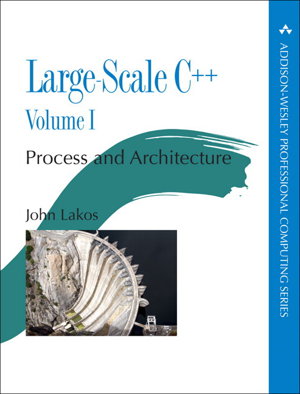
PublishedPearson Education, December 2017 |
ISBN9780201717068 |
FormatSoftcover, 1024 pages |
Writing reliable and maintainable C++ software is hard. Designing such software at scale adds a new set of challenges. Creating large-scale systems requires a practical understanding of logical design - beyond the theoretical concepts addressed in most popular texts.
To be successful on an enterprise scale, developers must also address physical design, a dimension of software engineering that may be unfamiliar even to expert developers. Drawing on over 30 years of hands-on experience building massive, mission-critical enterprise systems, John Lakos shows how to create and grow Software Capital. This groundbreaking volume lays the foundation for projects of all sizes and demonstrates the processes, methods, techniques, and tools needed for successful real-world, large-scale development.
Up to date and with a solid engineering focus, Large-Scale C++, Volume I: Process and Architecture, demonstrates fundamental design concepts with concrete examples. Professional developers of all experience levels will gain insights that transform their approach to design and development by understanding how to:
Raise productivity by leveraging differences between infrastructure and application development
Achieve exponential productivity gains through feedback and hierarchical reuse
Embrace the component's role as the fundamental unit of both logical and physical design
Analyse how fundamental properties of compiling and linking affect component design
Discover effective partitioning of logical content in appropriately sized physical aggregates
Internalise the important differences among sufficient, complete, minimal, and primitive software
Deliver solutions that simultaneously optimise encapsulation, stability, and performance
Exploit the nine established levelisation techniques to avoid cyclic physical dependencies
Use lateral designs judiciously to avoid the "heaviness" of conventional layered architectures
Employ appropriate architectural insulation techniques for eliminating compile-time coupling
Master the multidimensional process of designing large systems using component-based methods

